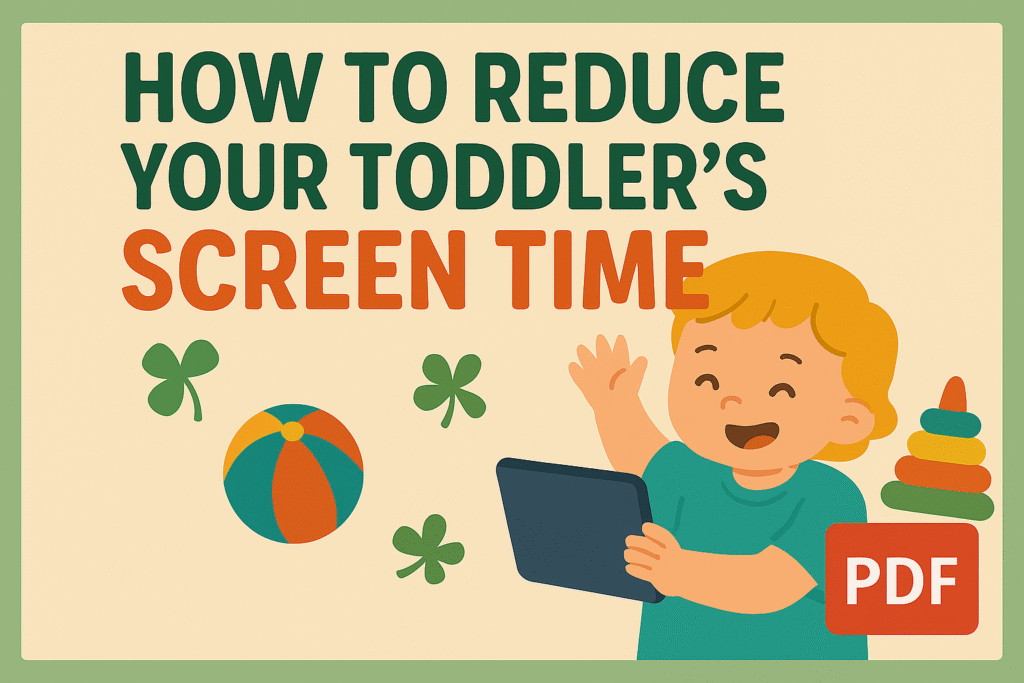In today’s digital world, even our tiniest humans are becoming tech savvy before they can fully speak. A tablet in the high chair, cartoons on loop, or a smartphone in a stroller it’s often the easiest way to keep toddlers occupied.
But here’s a quiet truth many parents feel but rarely voice:
“Is all this screen time actually good for my child? How to Reduce Your Toddler’s Screen Time Without Tears or Tantrums?“
You’re not alone. The balance between calm parenting and healthy development is tough. But reducing screen time doesn’t mean removing joy or peace it means replacing passive watching with meaningful connection.
This blog is your warm, practical guide to help your toddler step away from the screen… and step into a healthier, more engaged little world.
🧠 Why It Matters: Screens and Developing Minds
Toddlers are at a magical age where their brains are growing at lightning speed. Every giggle, every stumble, every new word is building their foundation.
But prolonged screen time can:
- 💤 Reduce attention span
- 😶 Delay language development
- 🧩 Replace imaginative play
- 😔 Limit bonding moments
The goal isn’t to shame or scare it’s to understand. Occasional screen time isn’t the enemy. It’s about what gets replaced when screens become constant.
👨👩👧 Gentle Ways to Start Reducing Screen Time
Here’s the secret to how to reduce your toddler’s screen time without tears or tantrums: kids don’t need the screen: they need something better.
Let’s explore some human centered, simple ways to gently reduce screen time:

1. Replace, Don’t Just Remove
📌 Toddlers thrive on attention. So instead of saying “no screen,” try:
- “Let’s read this animal book together”
- “Want to help me pour water in the plant?”
- “Let’s race the toy cars!”
It’s not about less joy. It’s about different joy.
2. Create a Screen Free Zone
Designate one area like the dining table or bedroom as a screen free zone. This adds gentle boundaries without policing.
Even better? Make it fun. Use cute signs or let your child help decorate the “No Screen Corner.”
3. Lead by Example
Kids mimic what they see. If you’re glued to your phone, they’ll want to do the same. Show them your phone stays down during playtime, meals, or walks.
🧡 This small act builds trust and models self control.
4. Set Simple Routines
Routines build predictability, which toddlers love. Have a morning “music dance time” or a post lunch coloring session. When life feels structured, screens aren’t needed as filler.
5. Make Boredom Okay
Yes, it’s okay for your toddler to be bored sometimes.
Boredom fuels creativity. A toddler staring at the ceiling today might be pretending to be an astronaut tomorrow.
6. Use Audio Stories Instead of Video
Try swapping cartoons with kid friendly podcasts or audio stories. This still entertains but encourages listening skills and imagination without screen glare.
7. Keep Screens Out of Sight
Out of sight, out of mind. When the tablet is on the shelf or TV remote is tucked away, toddlers are less likely to ask.
💡 Bonus tip: keep books, blocks, or soft toys within reach instead.
💬 What If They Cry for It?
They probably will at least at first.
And that’s okay.
Change is hard, even for little hearts. Acknowledge their feelings:
“I know you love the cartoons. They’re fun! But now it’s time for blocks. Let’s build a tower.”
Stay gentle. Stay consistent. And remember you’re doing this with your child, not to them.
🌱 Little Wins, Big Growth
Reducing screen time isn’t about being the “perfect parent.” It’s about building a home where:
- 🎨 Creativity is encouraged
- 🧸 Play is the priority
- 👫 Connection matters more than convenience
As the days pass, you’ll notice your toddler start to explore more, express more, and depend less on digital distraction.
Because childhood isn’t just about passing time.
It’s about creating memories that don’t need charging.
Visit more blogs for your daily life problems here

